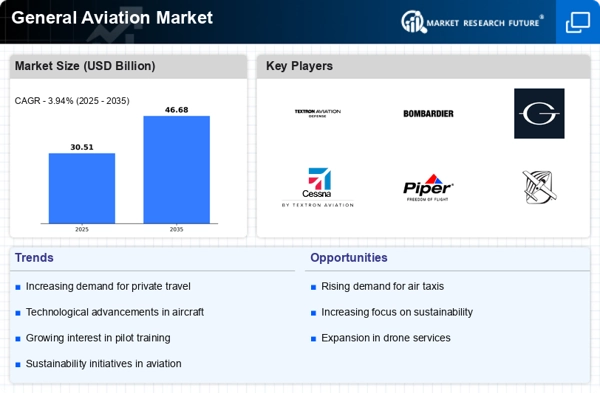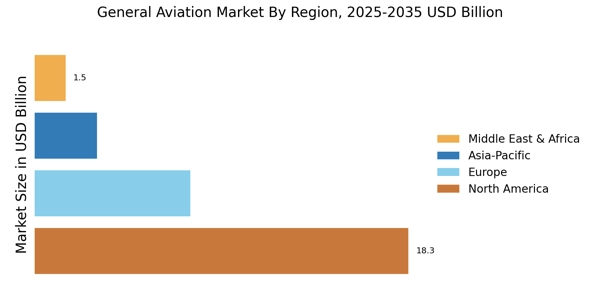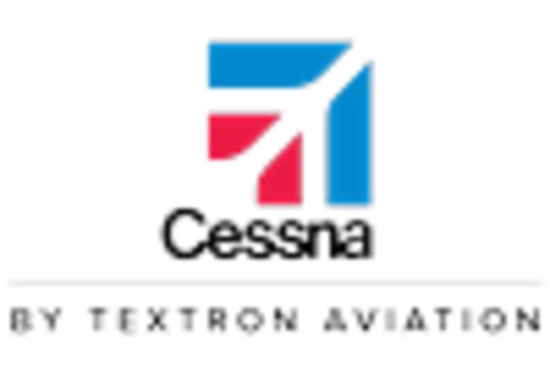The General Aviation Market is currently characterized by a dynamic competitive landscape, driven by innovation, technological advancements, and a growing demand for personalized air travel solutions. Key players such as Textron Aviation (US), Bombardier Inc. (CA), and Embraer S.A. (BR) are strategically positioning themselves to capitalize on these trends. Textron Aviation (US) focuses on enhancing its product offerings through continuous innovation, while Bombardier Inc. (CA) emphasizes sustainability in its operations, particularly in the development of eco-friendly aircraft. Embraer S.A. (BR) is actively pursuing partnerships to expand its market reach, indicating a trend towards collaborative growth in the sector. Collectively, these strategies contribute to a competitive environment that is increasingly shaped by technological advancements and customer-centric solutions.
In terms of business tactics, companies are increasingly localizing manufacturing and optimizing supply chains to enhance operational efficiency. The General Aviation Market appears moderately fragmented, with several key players exerting influence over specific segments. This fragmentation allows for niche players to thrive, while larger companies leverage their scale to optimize production and distribution. The collective influence of these key players fosters a competitive structure that encourages innovation and responsiveness to market demands.
In August 2025, Textron Aviation (US) announced the launch of its new line of electric aircraft, marking a significant step towards sustainable aviation. This strategic move not only aligns with global trends towards reducing carbon emissions but also positions Textron as a leader in the emerging electric aviation segment. The introduction of electric aircraft could potentially reshape customer expectations and industry standards, emphasizing the importance of sustainability in future aviation developments.
In September 2025, Bombardier Inc. (CA) unveiled its latest business jet model, which incorporates advanced aerodynamics and fuel-efficient technologies. This launch underscores Bombardier's commitment to innovation and sustainability, as the new model is designed to reduce fuel consumption significantly. Such advancements may enhance Bombardier's competitive edge, appealing to environmentally conscious consumers and businesses seeking efficient travel solutions.
In July 2025, Embraer S.A. (BR) entered into a strategic partnership with a leading technology firm to develop AI-driven flight management systems. This collaboration aims to enhance operational efficiency and safety in general aviation. By integrating AI technologies, Embraer is likely to improve its product offerings, thereby attracting a broader customer base and reinforcing its position in the market.
As of October 2025, the General Aviation Market is witnessing a shift towards digitalization, sustainability, and AI integration, which are defining current competitive trends. Strategic alliances are increasingly shaping the landscape, enabling companies to leverage shared expertise and resources. Looking ahead, competitive differentiation is expected to evolve, with a pronounced shift from price-based competition to a focus on innovation, technology, and supply chain reliability. This transition may redefine how companies engage with customers and compete in the marketplace.


















Leave a Comment